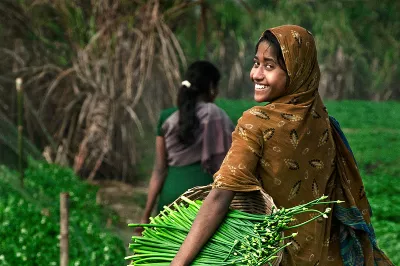Financial Inclusion for Young Women: A key support at a critical time
Young women between the ages of 15 and 24 make up eight percent of the world’s population and are negotiating key life transitions such as finishing school, entering the workforce, marriage, and motherhood. How they experience these transitions not only has an outsized impact on their own life outcomes but also shapes those of future generations. Research has shown that access to appropriate financial tools and knowledge at this age can not only help young women enhance savings, income, and financial management practices, but may also contribute to improving outcomes in other areas such as health and psychosocial functioning.
Yet it is precisely between the ages of 15 and 24 that the gender gap in financial inclusion opens up across low-income countries, with young women falling behind their male counterparts in key areas such as account ownership, saving, digital payments, and mobile money use. Addressing young women’s financial inclusion early, particularly during adolescence, is crucial for closing the gender gap and ensuring that young women can fully participate in the economic life of their communities.
How Can Financial Inclusion Initiatives Be Designed and Delivered to Include More Young Women?
Building on some two decades of work by financial institutions, NGOs, and donors, CGAP has recently taken stock of what works in financially including young women. In collaboration with local stakeholders, CGAP is now seeking to leverage and scale that industry experience, to design financial service and capability solutions that can help alleviate the social and economic exclusion of young women.
By identifying the specific needs and obstacles faced by young women, these efforts aim to enhance their lives, enabling them to generate income, access basic services, and build resilience. This research is critical in developing solutions that not only address immediate challenges but also have the potential to scale and significantly reduce the gender gap in financial inclusion.
CGAPs work highlights the importance of a segmented approach to financial inclusion, informed by the lessons learned from past initiatives. By understanding what strategies work for different groups of young women—whether independent or dependent—we can drive more effective and scalable solutions.
Additional Ressources
There are about 1 billion people between 15 and 24 years of age in the world’s less developed regions. As they grow into adulthood, they will need support from many sources – including parents, trusted mentors, and social networks – and a variety of financial and non-financial




